4 Days in Sicily – A Perfect Short Trip
categories: europe travel
Palermo Sicily
Opposite the tip of the boot that is the country Italy, in the heart of the Mediterranean, lies the beautiful island of Sicily. Characterized by pristine beaches, vociferous locals, and a deep love for both baroque churches and, interestingly enough, fried food. Four days in Sicily will allow you to unveil the tip of the cultural iceberg that is Sicily.
This little island is in fact, not so little. Measuring two-thirds the size of the Kingdom of Belgium, seeing all the highlights in a mere four days is simply not possible. Therefore this guide will focus mainly on the eastern part of the island within its folds the wonderful Mount Etna, Taormina, and Catania. Here you will also find the gateway to the pristine Aeolian islands. For the curious few, western Sicily is less touched by tourism meaning it is a smidge more authentic and budget-friendly but equally it has little to no tourism infrastructure making it harder to navigate around.
Getting around Sicily on public transportation is quite simply a heroic task. If the infrastructure is available (in many places it is sadly not), time schedules are treated as a suggestion rather than a fact. Making getting from point a to point b is needlessly arduous, especially on a muggy day in summer with temperatures soaring upwards of 40°C (104°F). Therefore, to ensure the holiday remains carefree the number one recommendation is to rent a car to explore around. Do be aware that Sicilian driving skills tend to veer towards the aggressive side in larger cities. Be proactive, make sure to always triple-check for scooters and learn to enjoy the ever-present symphony of honking horns that are typical of Sicilian cities.
As your 4-day Sicily itinerary is going to be rather packed, the best area to stay in Sicily is without a doubt the city of Catania. The city has an abundance of places to accommodations (for every price range) and is within a few hours drive from all the must-see attractions of eastern Sicily.
Table of contents: ()

Is Sicily safe?
One of the most researched questions about Sicily is concerning safety. Let’s nip that in the bud once and for all, yes Sicily is perfectly safe and no the mafia is not going to come and get you.
While it is true Sicily has a rather bloody history when it comes to the mafia, the local law enforcement and governing bodies have cracked down on these nefarious practices hard in the recent decade. In practice, this means that walking the streets of the larger cities of Palermo and Catania is now equally safe as Rome, Firenze, or Venice. The same rules apply: Be mindful of your valuables; do not leave your cell phone on the table when you are at the restaurant and never carry your wallet in your back pocket.
If you want to learn a bit more about the history of the mafia, there is an informative anti-mafia museum in Palermo (No Mafia Memorial, Via Vittorio Emanuele, 353). Alternatively, check out the dedicated mafia tours that are run across the island, these have not been included in this article.
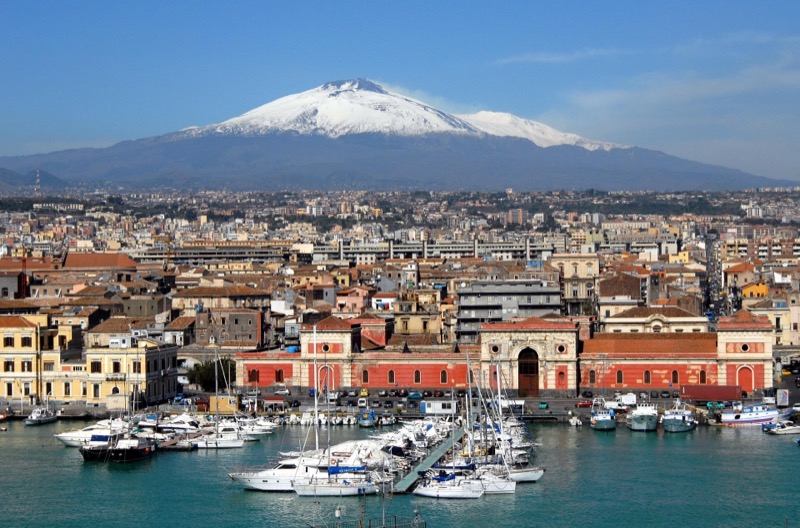
Image by notiziecatania from Pixabay
Day 1: Catania
Catania has the largest airport on the island and therefore sees the highest amount of both national and international flights whizz in and out. Tickets to fly into Catania are usually cheaper than to Palermo due to the large number of flights. To ease yourself into your 4-days in Sicily, start off by exploring this magnificent city that lies in the shadow of Mount Etna.
Discover the historic center of Catania
There is no better way to explore a city than by strolling through its streets and alleys uncovering the many secrets it holds. Start off in the central square, Piazza del Duomo which holds some of the most emblematic attractions in Catania: The Catania Duomo, the Catania city hall, and a fountain in the shape of an elephant. This is not just an ordinary elephant mind you, it is the very representation of Catania. Carved out of black lava and carrying the weight of an Egyptian obelisk, it is said this statue is the antidote to the eruptions of nearby Mount Etna. Next stroll towards Piazza dell’Universita, home to the exquisite Palazzo San Giuliano which can be visited.
Two streets stand out when visiting Catania, Via Etnea which runs through the city and ends with the most superb view of Mount Etna in the background. This is most likely the view you have seen in the major guidebooks. The second street is Via Crociferi, which is known not so much for the views but rather for its number of churches. If church hopping is your thing, get here early in the morning as most churches close right before lunchtime (1:00 pm). Should time be of the essence, skip the smaller churches and head straight for the former Benedictine Monastery of San Nicolò l’Arena, which is now a university building but can be visited (with or without a guide).
Tip: Unlike Palermo, Google Maps does tend to work when walking around Catania. Although the city is laid out in a relatively easy grid pattern making getting lost virtually impossible.
Immerse yourself in local life at the markets
Depending on which day of the week you happen to be in Catania, a different market is available. The most typical is without a doubt the fish market, where local vendors yell for dear life selling their goods. This market is only open in the morning when droves of locals come to purchase their daily fruits, vegetables, and of course fish. When the clock strikes 1:00 pm, the market magically transforms into a bubbling market square filled with little restaurants and bars.
An alternative to the fish market is the Monday market (Fera ‘o Luni Market). What was originally a market held only on Monday has become so popular in recent years that it is held every day (except Sunday) from 09.00 to 13.00. Come here for typical fruits and vegetables but also handmade jewelry and a variety of clothing.
Alternatively, get out of Catania and head for Ortigia
One of the best day-trips from Catania is to the beautiful baroque islet of Ortigia which is connected to Syracuse by two sets of bridges. Rated as one of the most beautiful places in all of Sicily, it is not hard to see why. The tightly knit maze of alleys crisscrossing this tiny island is filled why 3-story buildings that have the most ornate baroque façades imaginable. When walking through this storybook part of the island, keep your eyes up to spot the intricately carved balconies and the colorful ceramic pinecones (placed for good luck). An absolute highlight of Ortigia is the Syracuse Duomo on the Piazza Duomo. What was once a 5th-century BC temple of Athena was quite literally covered up by a cathedral in the 7th century. Remnants of the temple are still visible, especially on the inside.
Tip: If you come by car, do not park it on the island itself. There are a select few parking lots that are available for non-residence and they tend to fill up quickly with holiday goers who have rented a room on the island. Avoid the risk of getting your rental towed or being heavily fined and simply park on one of the many, many parking spots around Santa Lucia bridge.
Day 2: A day in Palermo
Palermo is the capital of Sicily and well worth spending at least a day in. It might appear a little run down on the edges, but don’t let appearances fool you. Behind slightly shabby doors, with peeling paint, lie spacious palazzi and remnants of the once wealthy southern Italian aristocracy that used to roam these very streets. There are a lot of things to do in Palermo, here is a snippet of activities to choose from during your 4-day trip.
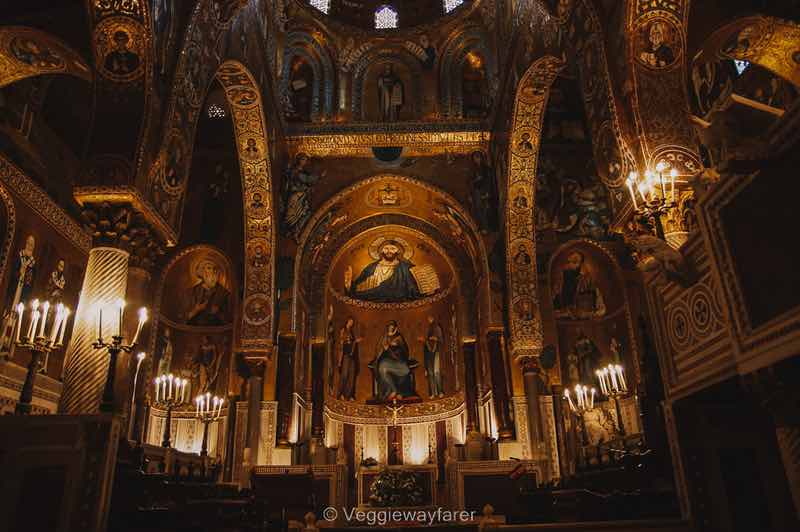
Palatine Chapel Palermo
Explore the Arab Norman Architecture in Palermo
The island of Sicily is peppered with UNESCO-designated Arab Norman Architecture. The Normans ruled over Sicily from the 10th to the 13th century, making Palermo their capital. Two of the most interesting places to visit in Palermo just happen to be remnants of this time period. At the entrance of the historic center lies the Norman Palace, unassuming from the outside and the current seat of the Sicilian parliament and thus the oldest still-used parliamentary building in Europe. While this is fascinating as such, the real gem is nestled need inside the folds of the Norman Palace, the Palatine Chapel. Built in the 12th century by the Norman King Roger II of Sicily as his private chapel. Covered in an estimated 6000 hand-painted golden mosaics, depicting various biblical scenes.
Tip: The ticket booth for the Norman palace is not at the entrance itself, rather cross the open square and head to the forested patch opposite the entrance. Here you will find a little wooden chalet-type building where tickets are sold.
Eat your way through one of the three historic markets of Palermo
Palermo has four historic markets which have been running for decades: La Vucciria, il Capo, and Ballaro are the most frequented and the safest. The markets are a great place to indulge in some good old people-watching and eat the most typical Palermitan street food (including the spleen sandwich which is grilled right in front of you at the Ballaro market). Fifteen years ago these markets, hidden deep inside the historic center, were an absolute no-go zone. Nowadays they are brimming with little eateries and tour guides showing around eager visitors. Visiting is an absolute must when visiting Palermo.
- Get a universal plug adapter
- Book Your Accommodation HERE
- Search for Great Tours HERE
- Get a Car Rental
- Buy Travel Insurance
- Get an eSim to be able to use your smartphone abroad.
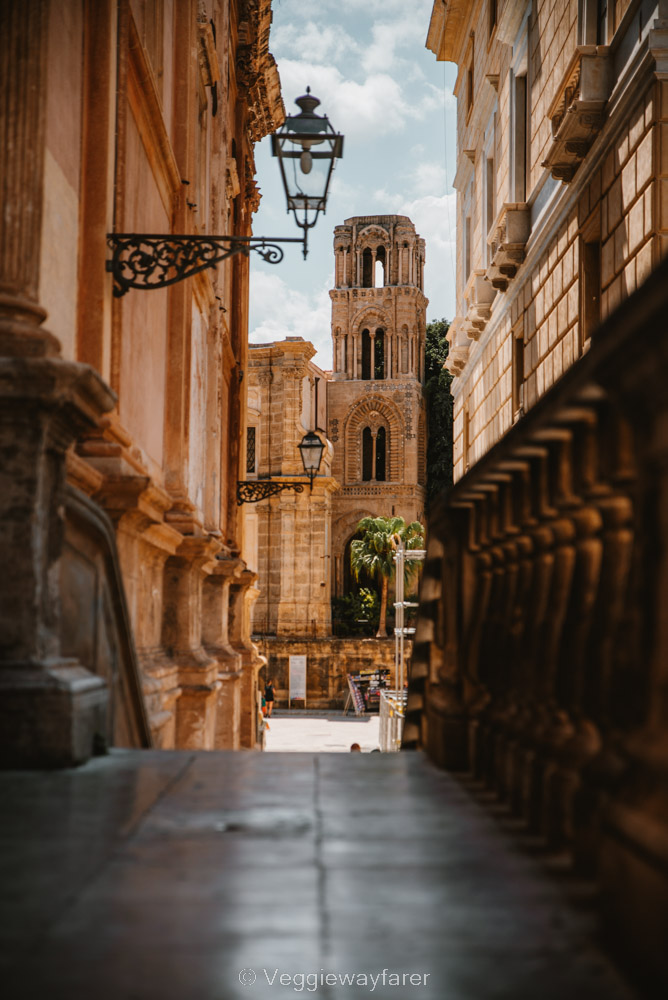
Walk around the beautifully restored historic center
Via Vittorio Emmanuele crosses Via Maqueda at the baroque Quatro Canti, thus splitting the historic center into four distinct sections. While once these avenues were filled with cars, now they have been closed off and are safe havens for pedestrians. Though you need to be mindful of the horse-drawn carriages and their modern-day variant, the electric scooter, as they come galloping around the corner. As much as it might seem tempting to take either, both are not well regulated and the former is most likely to cause harm to the horse while the latter might see you getting awkwardly close to the pavement due to failing brakes.
Back to the historic center. Check out the Cathedral of Palermo, the inside is decidedly less impressive than the outside but a visit to the rooftop more than makes up for that as it provides the very best views over Palermo. This activity is not suitable for those suffering from vertigo or claustrophobia as the stairway up can be slightly narrow.
Tip: Google maps is very spotty and tends to get a little confused when you head into the maze of alleys that is Historic Palermo. Let this be a sign to put the phone away and enjoy a leisurely stroll. Every little street will eventually lead you to a tiny square which, in true Sicilian style, is lined with bars & restaurants. One will never go wanting for food in the capital of this marvelous island.
Check out the beach near Palermo
If your visit happens to coincide with the sweltering summer months, make a beeline for Mondello, the nearest beach in Palermo. Technically Mondello is part of the bustling city, yet it feels like a different part of the world altogether. Tightly packed, multi-tier houses filled with colorful washing, make way for beautiful Liberty villa’s on large swathes of land. Alleys are transformed into forested boulevards and the uninterrupted beachfront replaces the busy Vittorio Emanuele. The only slight downside is that due to its proximity to the heart of the city, everyone and their cat moves to Mondello in the summer months. If you want to nab yourself a lounge chair (€25 for the day) you will need to be there before 10:00 am.
Day Three: Climb Mount Etna and check out Taormina
A visit to Sicily is not complete without a climb up the jaw-dropping, active volcano Mount Etna. At over 3,357 meters (11,013 feet), the volcano dominates the eastern Sicily landscape. The last eruption of Mount Etna dates back to 2021, therefore before planning any arduous hikes, always double-check if it is safe to hike/visit. The slopes of Mount Etna contain various checkpoints: Rifugio Sapienza (starting point 1900 meters), mountain hut (2500 meters), Torre del Filosofo (2900 meters), top (3350 meters). The route between Torre del Filosofo and the top is only accessible with a guide for safety reasons.
There are a variety of different ways to conquer this majestic mountain, let’s delve into them.
- Guided Tour from a-z: Many tour operators offer decently priced tours with pick-up and drop-off at the hotel. When you book, make sure to double-check everything is included (e.g. ticket for the cable car, jeep ride to the top of the mountain if relevant)
- Guided, with own transportation: Park your car at Rifugio Sapienza from here take a guided tour to the top.
- Semi-Guided: Park your car at Rifugio Sapienza and make your own way up to the Torre del Filosofo (either hike or take the cable car). From here you can opt to take a jeep ride or a guided hike to the top of the crater.
Clambering up and down Mount Etna will take a good 6-8 hours if you decided to hike, tours are anywhere between 4 and 6 hours depending on your preferred mode of transport. This leaves ample time to check out the nearby village of Taormina, with its wonderfully preserved 3rd-century BC Greek theater that just happens to have the most spectacular views over Mount Etna at sunset. During the summer months, this ancient theater is used and ancient Greek tragedies are played during sunset. These tickets tend to sell out like hotcakes, therefore if it is on your bucket list make sure to book tickets in advance.
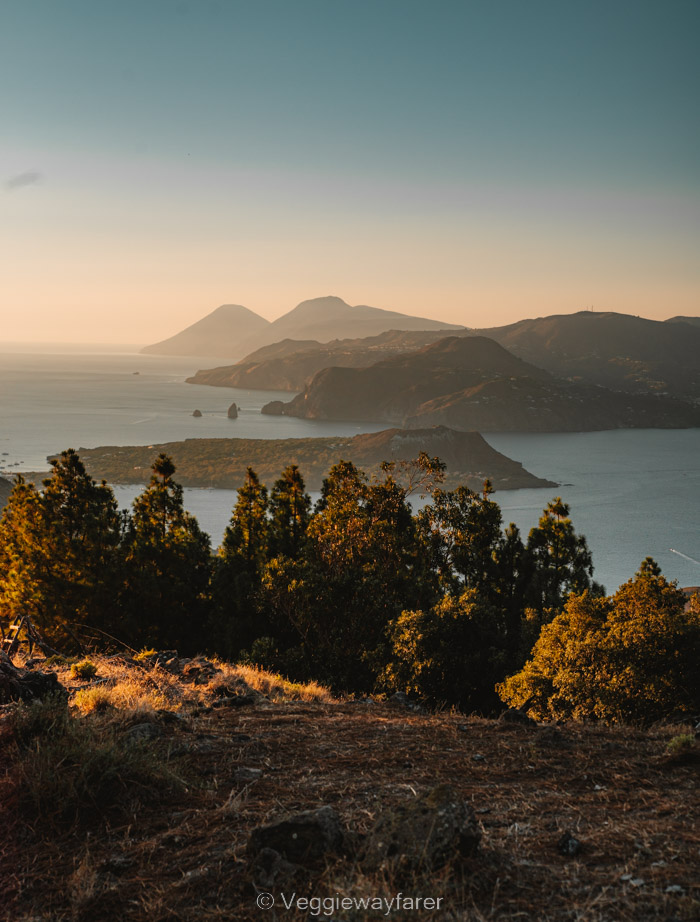
Vulcano Island, Sicily
Day Four: Go island hopping to the Aeolian islands
Due to its size, the island of Sicily does not have that distinct island feel. If you are looking for rest and relaxation, whitewashed houses, and a laid-back atmosphere the Aeolian Islands surrounding the northwestern coast of Sicily will do the trick.
There are seven islets in total to choose from: Lipari, Vulcano, Salina, Stromboli, Filicudi, Alicudi, and Panarea. Each one is very distinct and attracts different types of crowds. The most visited islands are Lipari, Vulcano, and Stromboli (which houses the eponymous active volcano). These islands have some of the best sandy beaches in the region, all of which are accessible on foot.
The tiny islet of Panarea is a more exclusive getaway, although perfectly accessible to anyone, prices for accommodation tend to be significantly higher. Due to its small size, purchasing a house on this islet is reserved for nobility and the ultra-wealthy with very good connections. If you are considering visiting Panarea and want to spend time at the beach, you will need to rent a little boat (daily hire available at the docking port of the ferry) to navigate around the island in search of a beach.
Tip: You will not need a car on the Aeolian islands. In high season ferries run hourly from the port of Palermo or the port of Messina. Booking in advance is required for the ferries and can be done online.

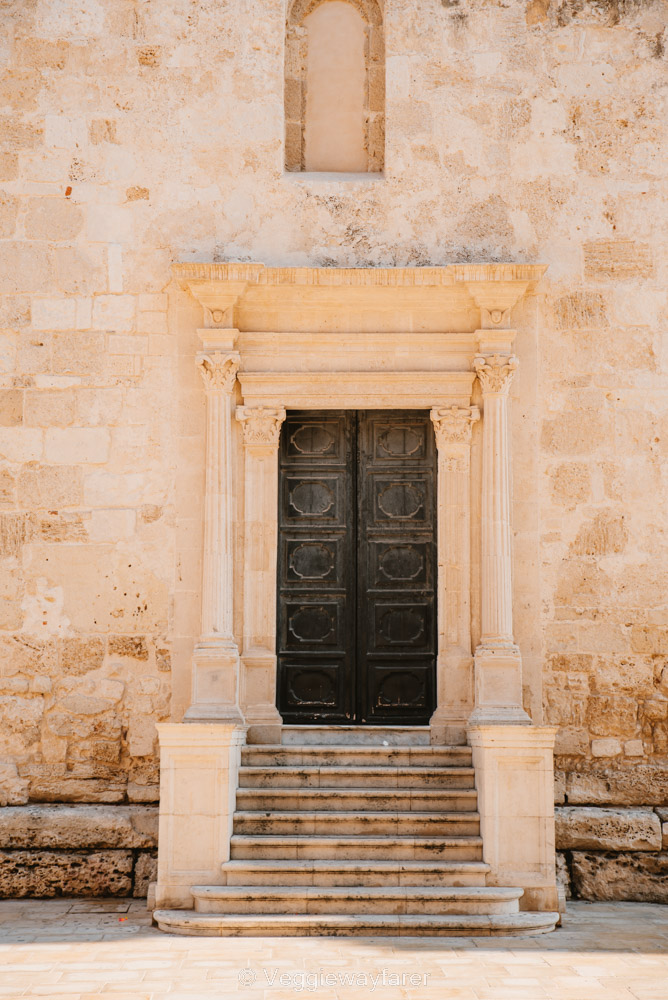
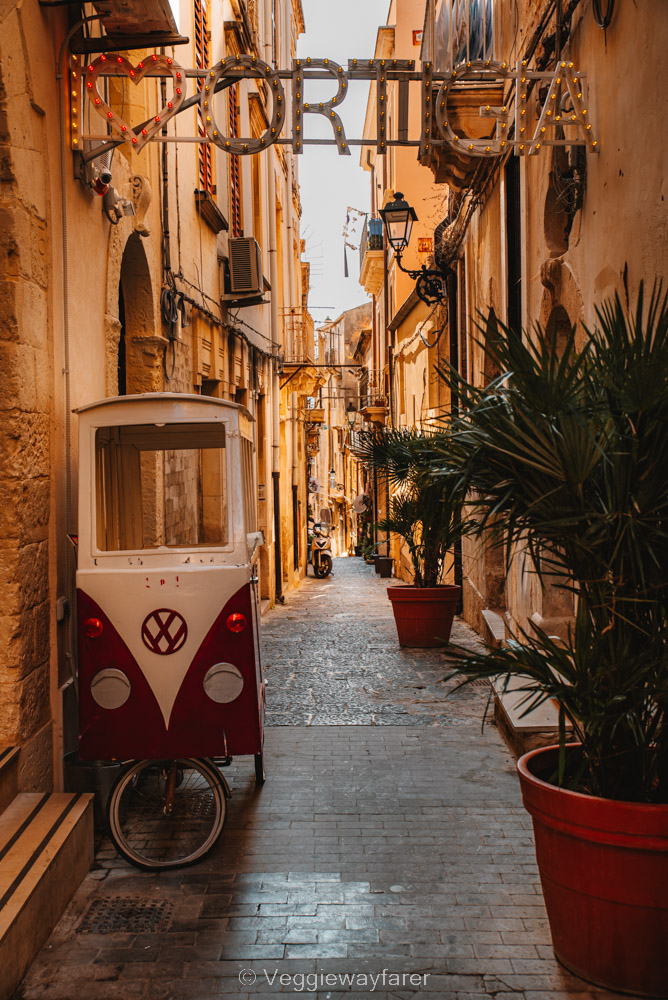
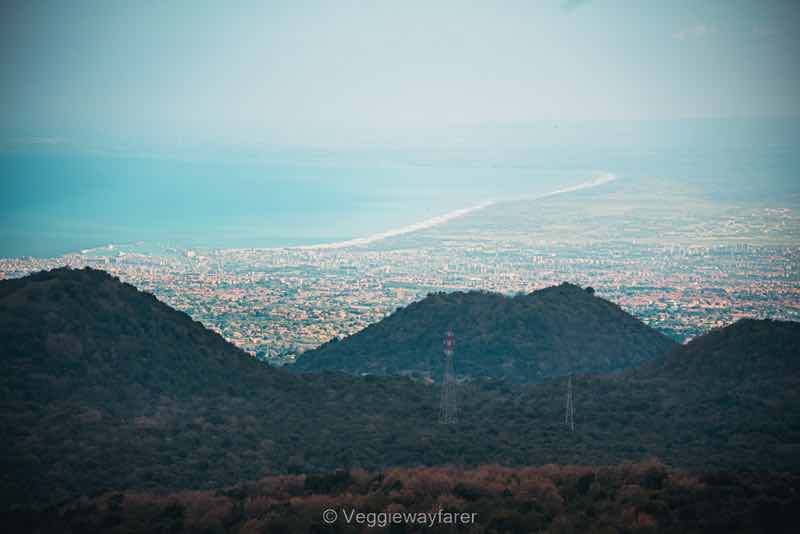
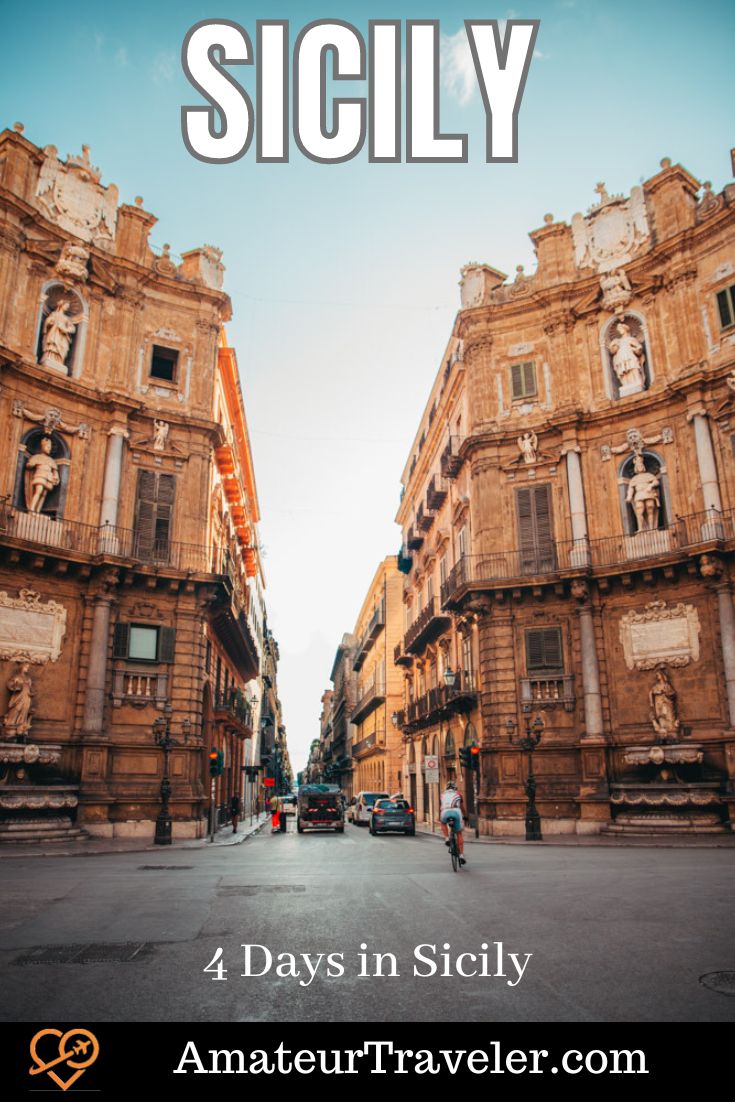
 Travel to Sicily – Episode 651
Travel to Sicily – Episode 651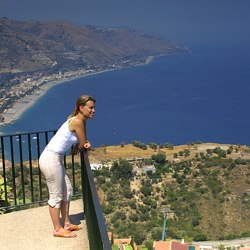 Travel to Sicily in Italy – Episode 197
Travel to Sicily in Italy – Episode 197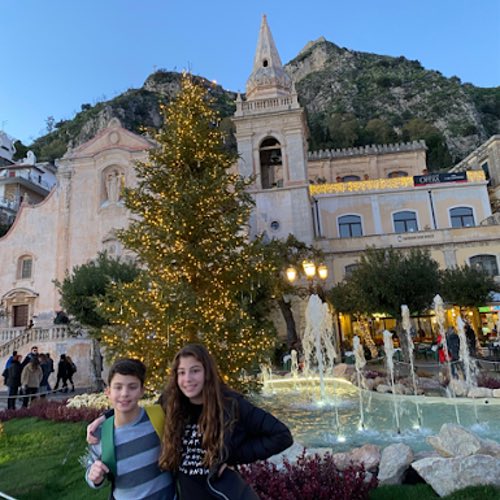 Places to Visit in Sicily for a Family Holiday
Places to Visit in Sicily for a Family Holiday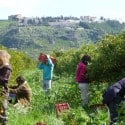 WWOOFing in Sicily
WWOOFing in Sicily
